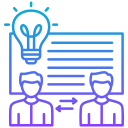The Role of Peer Programming in Modern Education
Peer programming, an approach in which students collaborate closely to solve coding tasks and develop software projects, has emerged as a transformative element in today’s educational landscape. By emphasizing teamwork, critical thinking, and continuous feedback, this method aligns with the evolving demands of the tech industry and modern pedagogical strategies. Integrating peer programming into curricula not only enriches the learning experience but also cultivates essential soft skills such as communication, adaptability, and problem-solving. As educational institutions strive to prepare students for real-world challenges, understanding the multifaceted role of peer programming is crucial for fostering both technical competence and collaborative spirit.


Supporting Deeper Conceptual Understanding

